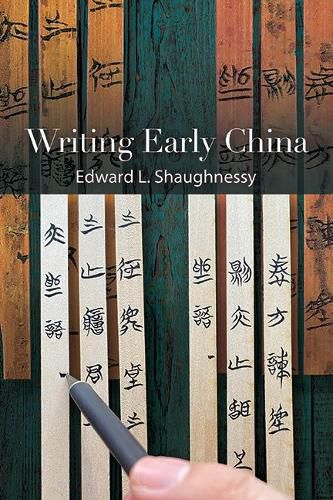Readings Newsletter
Become a Readings Member to make your shopping experience even easier.
Sign in or sign up for free!
You’re not far away from qualifying for FREE standard shipping within Australia
You’ve qualified for FREE standard shipping within Australia
The cart is loading…






Considers what unearthed documents reveal about the creation and transmission of knowledge in ancient China.
Archaeological discoveries over the past one hundred years have resulted in repeated calls to "rewrite ancient Chinese history." This is especially true of documents written on oracle bones, bronze vessels, and bamboo strips. In Writing Early China, Edward L. Shaughnessy surveys all of these types of documents and considers what they reveal about the creation and transmission of knowledge in ancient China. Opposed to the common view that most knowledge was transmitted orally in ancient China, Shaughnessy demonstrates that by no later than the tenth century BCE scribes were writing lengthy texts like portions of the Chinese classics, and that by the fourth century BCE the primary mode of textual transmission was by way of visual copying from one manuscript to another.
$9.00 standard shipping within Australia
FREE standard shipping within Australia for orders over $100.00
Express & International shipping calculated at checkout
Considers what unearthed documents reveal about the creation and transmission of knowledge in ancient China.
Archaeological discoveries over the past one hundred years have resulted in repeated calls to "rewrite ancient Chinese history." This is especially true of documents written on oracle bones, bronze vessels, and bamboo strips. In Writing Early China, Edward L. Shaughnessy surveys all of these types of documents and considers what they reveal about the creation and transmission of knowledge in ancient China. Opposed to the common view that most knowledge was transmitted orally in ancient China, Shaughnessy demonstrates that by no later than the tenth century BCE scribes were writing lengthy texts like portions of the Chinese classics, and that by the fourth century BCE the primary mode of textual transmission was by way of visual copying from one manuscript to another.